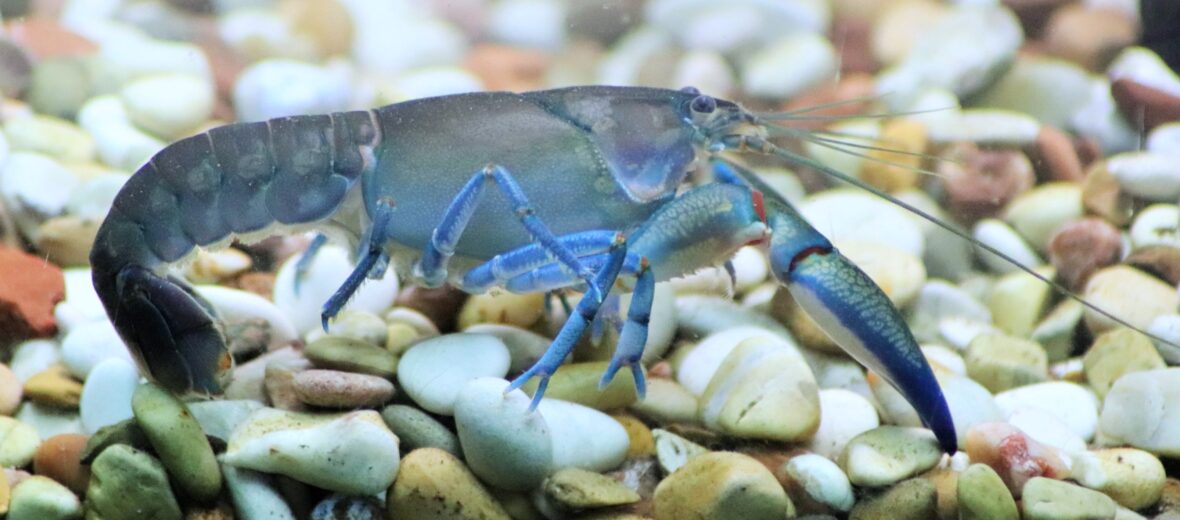
The yabby is common in Victoria and New South Wales, although the species also occurs in southern Queensland, South Australia, and throughout parts of the Northern Territory, making it the most widespread Australian crayfish. They have been introduced into Western Australia, where they have become an invasive species and pose a threat to other Cherax crayfish species native to that region. Yabbies are found in swamps, streams, rivers, reservoirs, and farm dams.
First the Stats…
Scientific name: Cherax destructor
Weight: Up to 2.7 ounces
Length: Up to 4.7 inches
Lifespan: Up to 7 years
Now on to the Facts!
1.) Although they live in water, they have the ability to survive droughts for many years by burrowing into river beds and remaining sedentary until the rains return!
2.) Yabbies molt (shed their exoskeleton – shell) numerous times during their life. The new shell matches the existing water conditions. This means that if the water is dirty or cleaner, the new shell will be brown or blue to match the conditions.
3.) They are detritivores (eat sediment and get their nutrients from findings in the substrate). They are also omnivores (eat plant and animal matter).
4.) If food is really scarce a yabby will even eat another yabby! I wonder if they eat their liver with some fava beans and a nice chianti. Doesn’t that sound nice, Clarice?
5.) Some of their main predators are insect larvae, fish, eels, turtles, birds, platypus, and water rats.
But wait, there’s more on the yabby!
6.) Although some scientists consider yabbie crayfish to be susceptible to extinction, they are actually very common throughout Australia and are actually considered a pest in Western Australia where they have been introduced.
7.) While less common than prawns and other crustaceans, yabbies are eaten in Australia much like crayfish in other countries. Usually, yabbies are boiled and eaten plain, or with condiments.
Did you know…?
Catching yabbies, or “yabbying”, is a popular summertime activity in Australia for children.
8.) A female can lay anywhere from 100 – 1,000 eggs at a time. She carries the eggs under her curved tail for up to 40 days.
Now a Short Yabby Video!
Also, check out the Critter Science YouTube channel. Videos added frequently!
Want to suggest a critter for me to write about? Let me know here.



